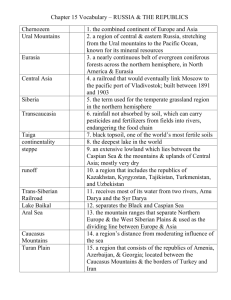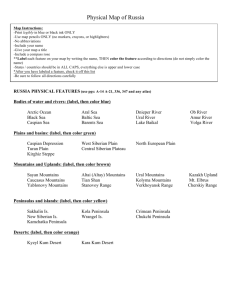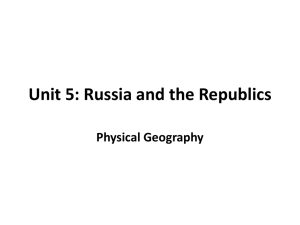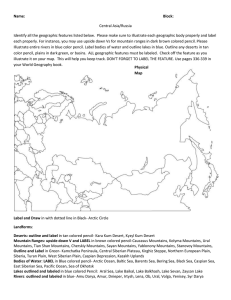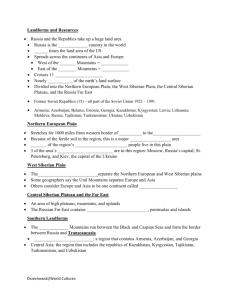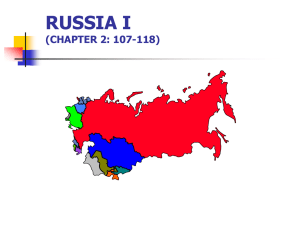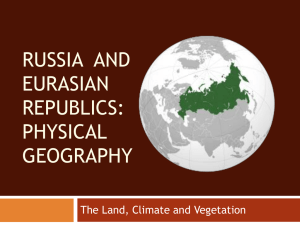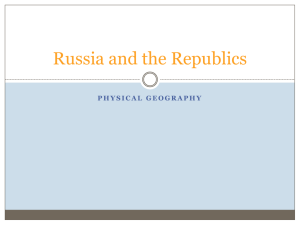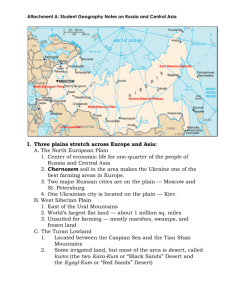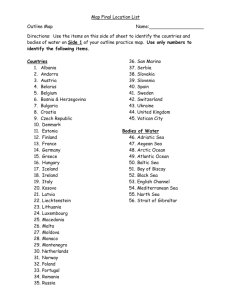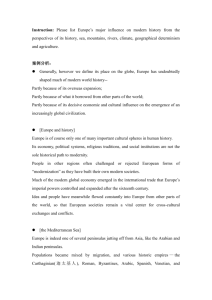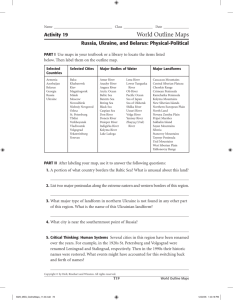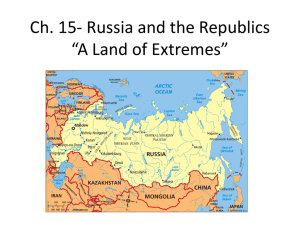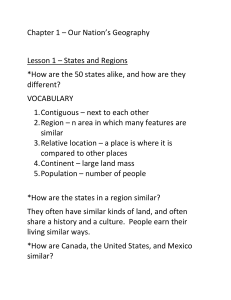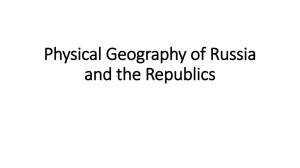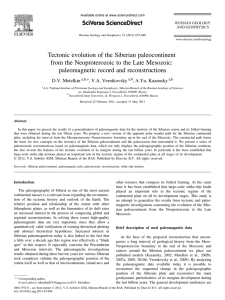Physical Map of Russia - Sayre Geography Class
advertisement
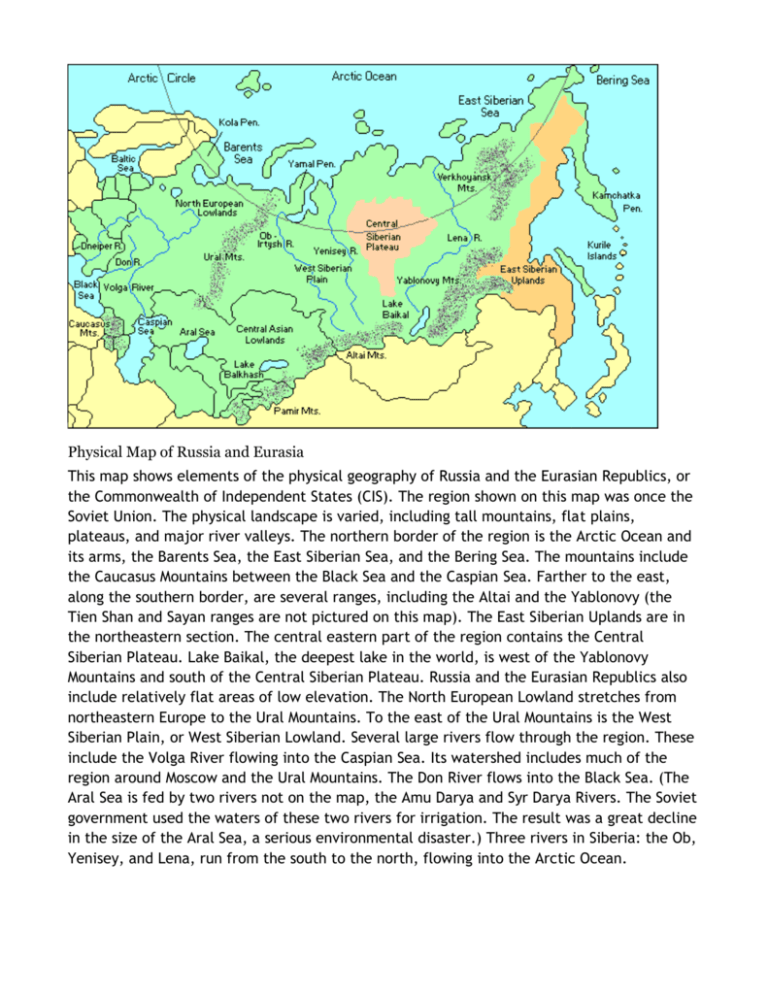
Physical Map of Russia and Eurasia This map shows elements of the physical geography of Russia and the Eurasian Republics, or the Commonwealth of Independent States (CIS). The region shown on this map was once the Soviet Union. The physical landscape is varied, including tall mountains, flat plains, plateaus, and major river valleys. The northern border of the region is the Arctic Ocean and its arms, the Barents Sea, the East Siberian Sea, and the Bering Sea. The mountains include the Caucasus Mountains between the Black Sea and the Caspian Sea. Farther to the east, along the southern border, are several ranges, including the Altai and the Yablonovy (the Tien Shan and Sayan ranges are not pictured on this map). The East Siberian Uplands are in the northeastern section. The central eastern part of the region contains the Central Siberian Plateau. Lake Baikal, the deepest lake in the world, is west of the Yablonovy Mountains and south of the Central Siberian Plateau. Russia and the Eurasian Republics also include relatively flat areas of low elevation. The North European Lowland stretches from northeastern Europe to the Ural Mountains. To the east of the Ural Mountains is the West Siberian Plain, or West Siberian Lowland. Several large rivers flow through the region. These include the Volga River flowing into the Caspian Sea. Its watershed includes much of the region around Moscow and the Ural Mountains. The Don River flows into the Black Sea. (The Aral Sea is fed by two rivers not on the map, the Amu Darya and Syr Darya Rivers. The Soviet government used the waters of these two rivers for irrigation. The result was a great decline in the size of the Aral Sea, a serious environmental disaster.) Three rivers in Siberia: the Ob, Yenisey, and Lena, run from the south to the north, flowing into the Arctic Ocean. Question 1 What does this map show? Question 2 What bodies of water form the northern border of the Commonwealth of Independent States? Question 3 Read about the North European Lowlands and about the West Siberian Plain. Are these regions where large numbers of people live? Why or why not? Question 4 What is the geographical and political significance of the Ural Mountains? Question 6 What environmental challenges have affected this region?
